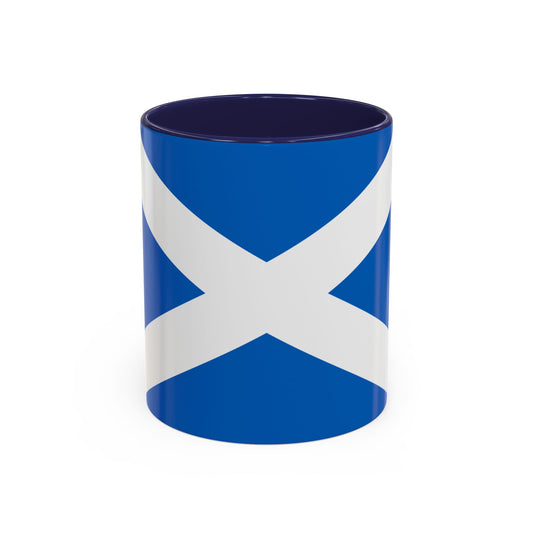-
Scotland Sweatshirt
Regular price $34.15 USDRegular priceUnit price / per -
Scotland Flag Sweatshirt
Regular price $34.15 USDRegular priceUnit price / per -
Scotland Pillow
Regular price $22.65 USDRegular priceUnit price / per -
Scotland Backpack
Regular price $59.79 USDRegular priceUnit price / per -
Scotland Leather Patch Hat
Regular price $18.85 USDRegular priceUnit price / per -
Scotland Mug
Regular price $11.65 USDRegular priceUnit price / per -
Scotland Trucker Cap
Regular price $14.90 USDRegular priceUnit price / per -
Scotland Hoodies
Regular price $34.40 USDRegular priceUnit price / per -
Scotland T-shirts
Regular price $22.79 USDRegular priceUnit price / per -
Scotland Flag Hoodies
Regular price $34.40 USDRegular priceUnit price / per -
Scotland Flag on T-shirt
Regular price $22.79 USDRegular priceUnit price / per -
Scotland and British Regional Flags
Regular price From $43.20 USDRegular priceUnit price / per -
Scotland Emblem Flag
Regular price From $34.12 USDRegular priceUnit price / per
Collection: Scotland
The Scotland flag, also known as the Saltire, is a symbol deeply rooted in Scottish history and pride. With its distinctive design and colors, the flag is a powerful emblem of the nation's identity. We will explore the mysteries behind the Scotland flag, from its origins to its current relevance in modern times.
Overview of the Scotland Flag

The iconic Scotland flag showcases a simple yet profound design: a stark white diagonal cross, known as a saltire, set against a vibrant blue backdrop. This unique and instantly recognizable flag configuration embodies a minimalist elegance that belies the depth of its historical and cultural significance. The white of the saltire is not just any white—it's a bright, vivid hue that stands out against the blue, a shade that has seen various interpretations over the years, ranging from sky blue to navy.
Historically, this blue is reminiscent of the Scottish landscape, evoking the vastness of the country's skies and the depth of its surrounding waters. The choice of the diagonal cross pays homage to the country's patron saint, Saint Andrew, and his martyrdom, while the color scheme itself has become a ubiquitous representation of Scotland's natural beauty and resilient spirit. In its simplicity, this flag carries the weight of Scotland's past and the hopes of its future, making it an emblem of profound importance to Scots worldwide.
Historical Context of the Scotland Flag
The adoption of the Saltire, Scotland's national emblem, dates to a pivotal moment in the early 9th century, solidifying its place in Scottish lore and history. Its official recognition as the national flag emerged in the 16th century, a testament to its enduring symbolism and the nation's pride. The narrative that led to the Saltire's ascendance is woven with legend and historical triumph, notably the Battle of Athelstaneford. Here, it is said that the Pictish King Óengus II, on the eve of a decisive clash against the Angles, was visited in a dream by Saint Andrew.
The saint, who would become Scotland's patron, promised victory if Óengus fought under the emblem of a white diagonal cross, mirroring Saint Andrew's own martyrdom. This divine intervention, culminating in a Scottish victory, cemented the Saltire's status not merely as a flag but as a celestial sign of protection and favor. Through centuries, the flag has remained largely unaltered, a direct line to its storied origins and a reminder of Scotland's resilience and unity in the face of adversity.
Symbolism Behind the Scotland Flag
The vivid white saltire at the heart of the Scotland flag carries profound significance, symbolizing the enduring Christian legacy and the martyrdom of Saint Andrew, Scotland's revered patron saint. This emblematic cross is more than a religious icon; it reflects the fortitude and sacrifice embedded in Scottish heritage. The blue background, evoking images of the expansive Scottish sky and the rolling seas that border the nation, serves as a canvas representing the country's rich natural beauty and its historical connection to the maritime world.
Beyond its representation of landscape and legacy, the flag's colors and design are imbued with deeper meanings that resonate with the Scottish people. The white of the saltire, stark against the blue, signifies purity, honesty, and innocence, virtues highly esteemed in Scottish culture. Meanwhile, the blue echoes themes of vigilance, justice, and perseverance. Together, these elements encapsulate the essence of the Scottish identity: a people committed to integrity and resilience in the pursuit of freedom and justice.
In essence, the Scotland flag is a vibrant testament to the nation's enduring values and its collective spirit. Its symbolism extends beyond the fabric, weaving together the past and the present, and inspiring a sense of belonging and pride among Scots everywhere.
Current Relevance of the Scotland Flag
In contemporary Scotland, the Saltire is more than a historical emblem; it's a living symbol of national pride and unity. It graces public spaces, flies high during international sports competitions, and adorns the uniforms of Scottish athletes, underlining the nation's identity on the global stage. On significant days, such as the commemoration of St. Andrew, the country's landscape is awash in its colors, reflecting a collective spirit and heritage.
Amid ongoing discussions about Scotland's future, particularly in relation to its status within the United Kingdom, the flag has found itself at the center of political and cultural discourse. Debates about independence and self-determination have elevated the Saltire's status from a mere symbol to a banner under which people rally for various causes. These discussions have spurred a renewed interest in what the flag represents, not just historically, but in the context of Scotland's aspirations and challenges in the 21st century. This dynamic dialogue ensures the Saltire remains a relevant and potent symbol, capturing the imagination and passion of Scots and Scotland enthusiasts worldwide.
Additional Facts About the Scotland Flag
When it comes to the display and reverence of the Scotland flag, several unique protocols highlight the nation's deep respect for this symbol. It is considered a sign of disrespect for the flag to be flown in a distressed state, such as being frayed or faded, ensuring that the Saltire always appears dignified and vibrant. Additionally, etiquette dictates that the flag should never be flown in the dark unless it is properly illuminated, reflecting the continuous pride Scots have in their emblem, day and night.
The Saltire's presence extends beyond the flagpole; it permeates various facets of Scottish life and culture. For instance, the flag's design is cleverly integrated into the logos of several Scottish organizations and entities, signifying their allegiance to Scotland's heritage and values. It also makes frequent appearances in public art and architecture, serving as a constant reminder of the nation's history and the collective identity of its people.
Interestingly, there are instances where the Scotland flag is incorporated into celebrations and memorials in unique ways, such as being fashioned into kilts or draped over caskets in military and state funerals, honoring the individual's Scottish heritage or service to the country.
One lesser-known fact about the Saltire is its adoption by some Scottish expatriate communities around the world, who use the flag during cultural events as a symbol of their enduring connection to their homeland. This global reverence for the Scotland flag underscores its significance not just as a national symbol, but as a beacon of Scottish identity and pride worldwide.


























